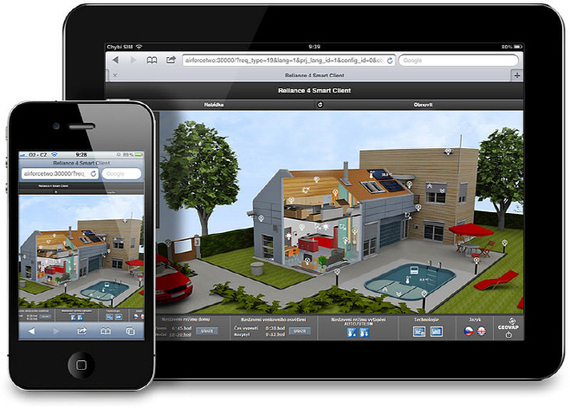Growing markets for intelligent homes
Telecom Asia , a press medium that specializes in Asian telecom industry, recently reported that Asia’s smart home market will grow to US$115 billion by 2030, accounting for 30% of the global share, citing a report by global management consulting firm AT Kearney.
Smart homes on the rise
Smart home is a system that allows you to control and monitor different devices in the home including the heating, lighting, security, and entertainment, automatically and sometimes remotely via the Internet. The report, “The Battle for the Smart Home: Open to All,” forecasted that the growth will be driven mainly by China and Japan, as well as highly-connected countries such as Singapore, South Korea and Taiwan. Japan is leading the smart home market. “Japan, which is already among the top five global markets in terms of smart home penetration, will see continued growth driven by an ageing population enticing households to install health and wellness solutions,” said Nikolai Dobberstein, partner and Asia-Pacific head of communications for media and technology at AT Kearney. “The opportunity in China is great with a phenomenal number of households seeing increased incomes and a strong local manufacturing and technology ecosystem,” he added. Singapore, South Korea, and Taiwan are all expected to have a high penetration of smart homes due to the large proportion of high-income households and the data connectivity in these countries.
What is driving the change?
According to the report, there are several major changes in Asia that are accelerating the expansion of the Asian smart home market. The first is the advancements in technology and smartphone functions along with the addition of big data and artificial intelligence (AI) are rapidly improving the convenience of smartphone application. Second is the expanding interoperability among products from different manufactures. Advancement of application programming interfaces (APIs) and efforts to standardize communication of applications are increasing rapidly. In addition, availability of related product has expanded and prices have become cheaper. At home, automated products are already being used in almost all respects and nearly 80% of them are available in the market in “smart” form. Also, cost reduction of key technology components are making smart home applications more cheaper […]
read more – copyright by www.huffingtonpost.com


Growing markets for intelligent homes
Telecom Asia , a press medium that specializes in Asian telecom industry, recently reported that Asia’s smart home market will grow to US$115 billion by 2030, accounting for 30% of the global share, citing a report by global management consulting firm AT Kearney.
Smart homes on the rise
Smart home is a system that allows you to control and monitor different devices in the home including the heating, lighting, security, and entertainment, automatically and sometimes remotely via the Internet. The report, “The Battle for the Smart Home: Open to All,” forecasted that the growth will be driven mainly by China and Japan, as well as highly-connected countries such as Singapore, South Korea and Taiwan. Japan is leading the smart home market. “Japan, which is already among the top five global markets in terms of smart home penetration, will see continued growth driven by an ageing population enticing households to install health and wellness solutions,” said Nikolai Dobberstein, partner and Asia-Pacific head of communications for media and technology at AT Kearney. “The opportunity in China is great with a phenomenal number of households seeing increased incomes and a strong local manufacturing and technology ecosystem,” he added. Singapore, South Korea, and Taiwan are all expected to have a high penetration of smart homes due to the large proportion of high-income households and the data connectivity in these countries.
What is driving the change?
According to the report, there are several major changes in Asia that are accelerating the expansion of the Asian smart home market. The first is the advancements in technology and smartphone functions along with the addition of big data and artificial intelligence (AI) are rapidly improving the convenience of smartphone application. Second is the expanding interoperability among products from different manufactures. Advancement of application programming interfaces (APIs) and efforts to standardize communication of applications are increasing rapidly. In addition, availability of related product has expanded and prices have become cheaper. At home, automated products are already being used in almost all respects and nearly 80% of them are available in the market in “smart” form. Also, cost reduction of key technology components are making smart home applications more cheaper […]
read more – copyright by www.huffingtonpost.com
Share this: